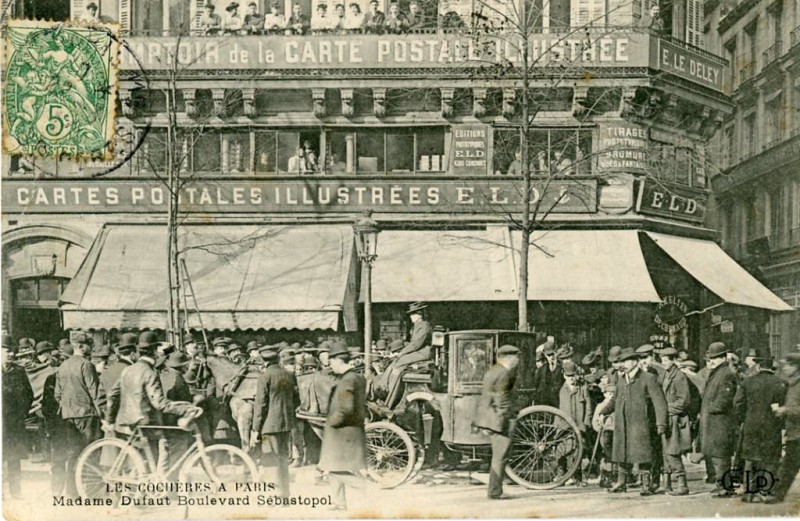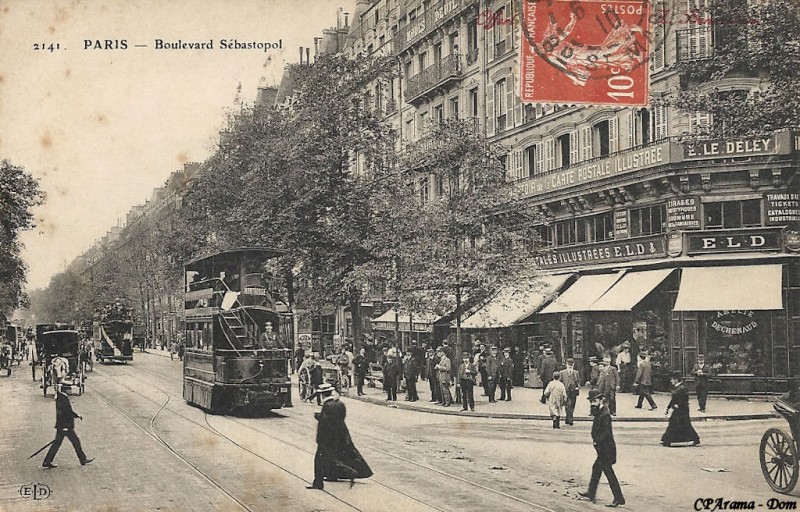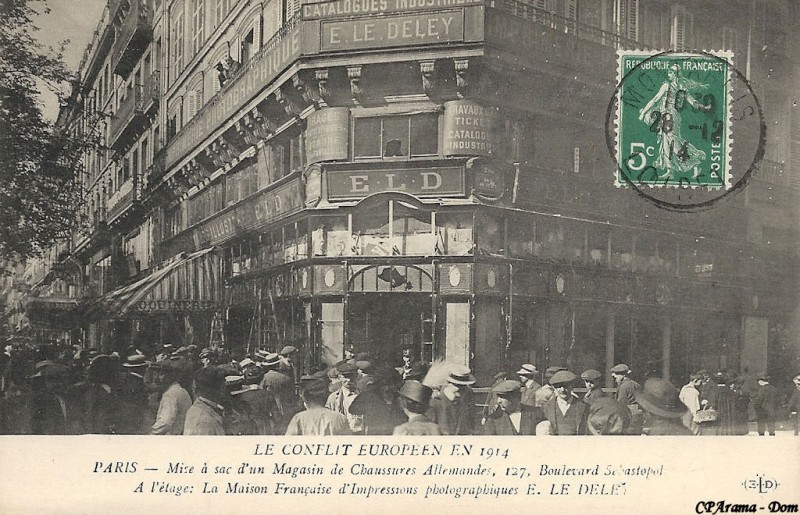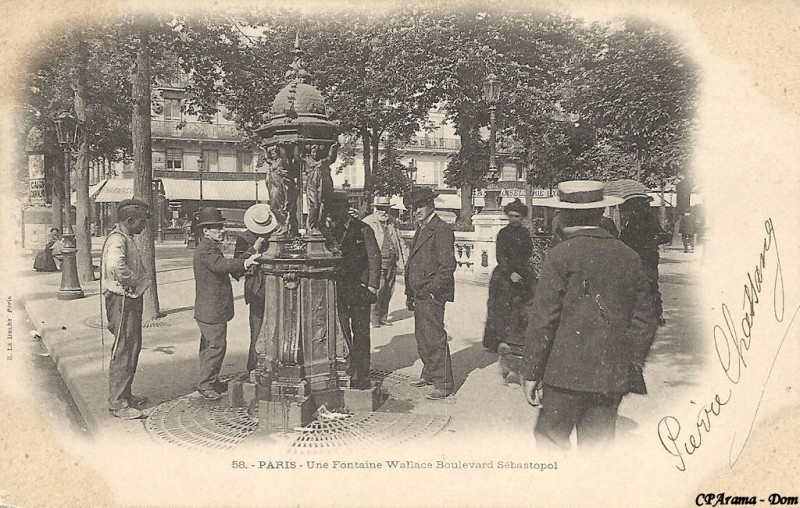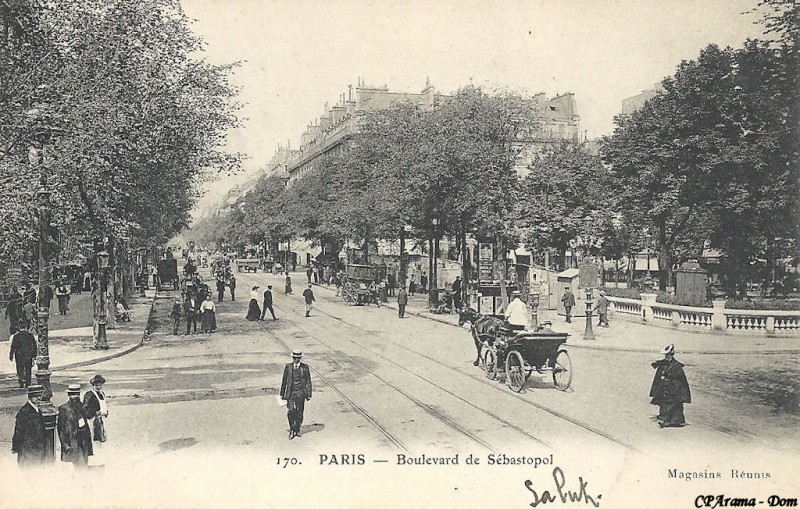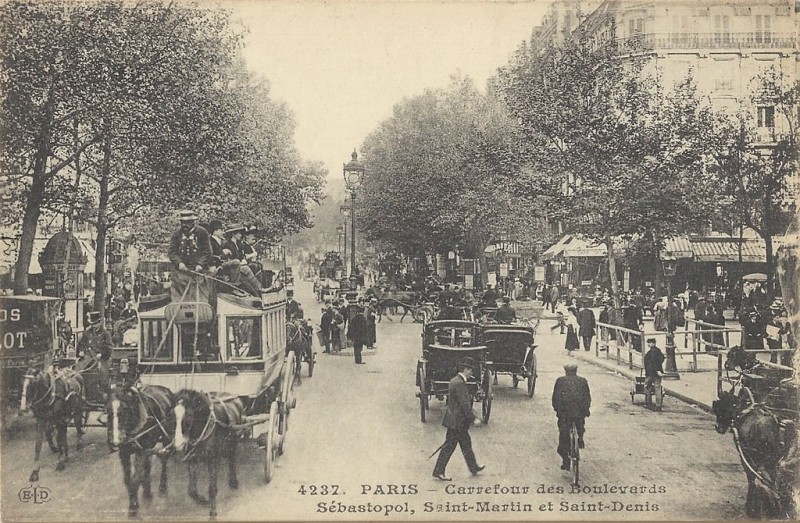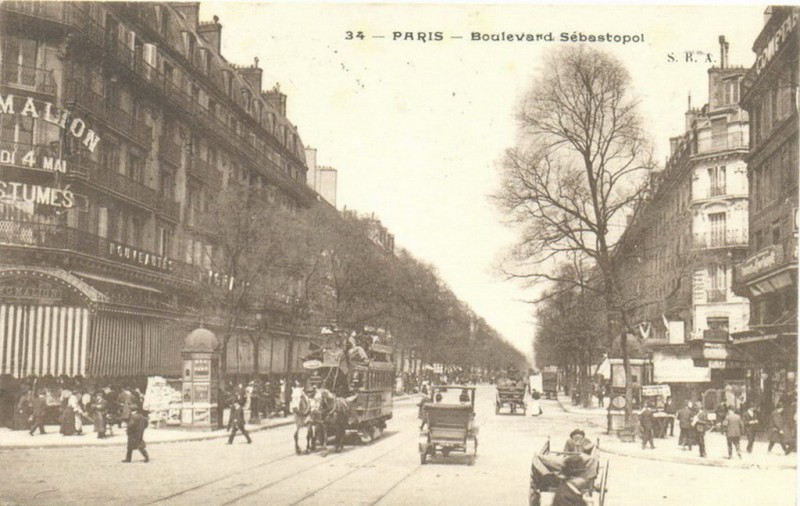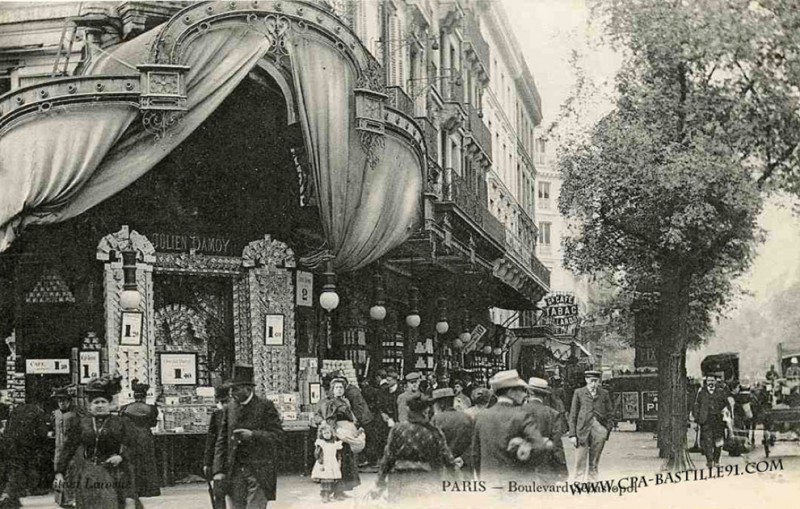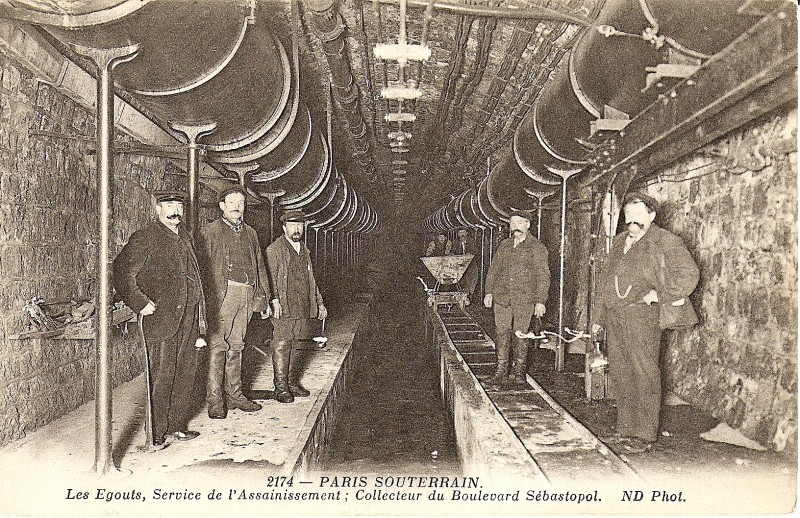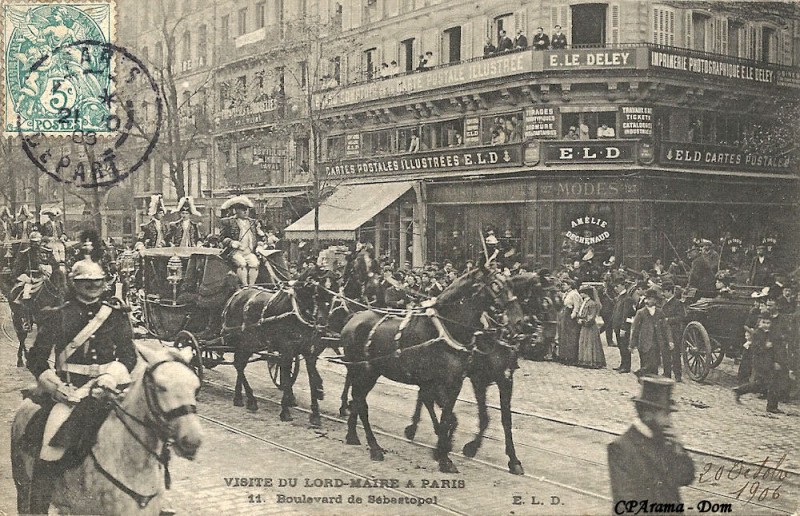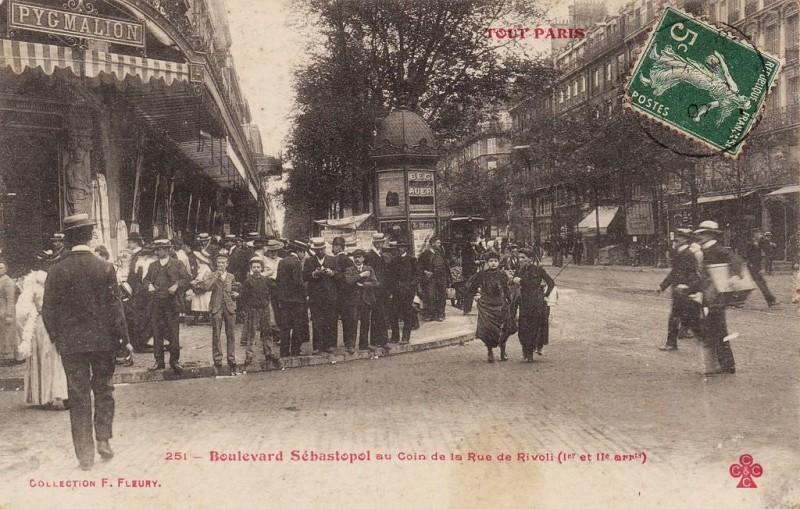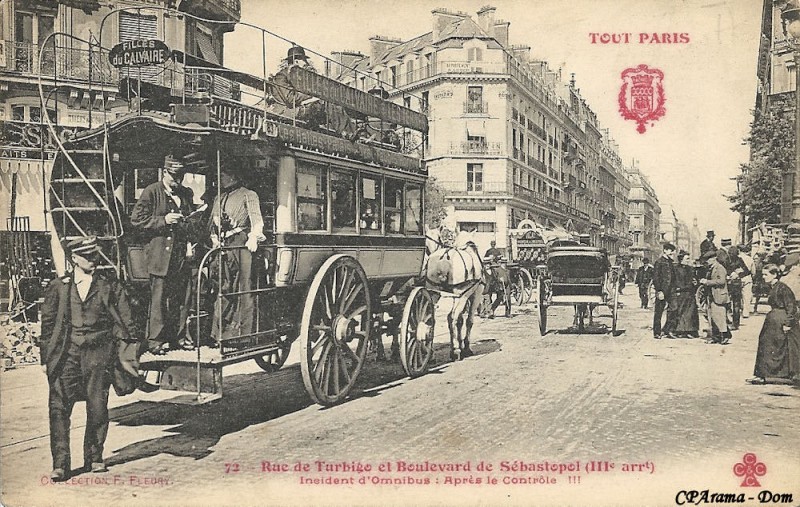
Le Boulevard de Sébastopol fut l’une des premières opérations entreprises par Haussmann sous le Second Empire. Destiné au prolongement du Boulevard de Strasbourg jusqu’à la Seine, ce nouvel axe faisait parti d’un ensemble comprenant la rue de Rivoli et le Boulevard Saint Germain, appelé aussi “Grande croisée de Paris”.
Déclaré d’utilité publique en 1853, le travaux commencèrent l’année suivante. Le Boulevard devait initialement porter le nom de “Boulevard du Centre” ou “Louis Napoléon”. Il adoptera son nom définitif suite à la victoire de Napoléon II au siège de Sébastopol en 1855.
L’entreprise absorbera les tracés de nombreuses rues anciennes, parmi lesquelles la rue Salle au Comte (entre Rambuteau et la rue aux Ours) et l’ancienne rue Bourg l’Abbé (entre les rue aux Ours et Greneta). D’autres furent coupés en deux telles les rues aux Ours, Blondel ou Sainte Appoline.
Les opérations d’expropriation et de lotissement effectuées à l’amiable, feront l’objet d’importantes spéculations. Le financement des travaux se heurtera à de nombreuses difficultés. Malgré cela, l’Empereur inaugurera le Boulevard le 5 avril 1858, alors que presqu’aucun immeuble n’avait encore été construit.
.
The Boulevard de Sébastopol was one of Haussmann’s first projects of the ‘second empire’. This new axis, which was set to link the Boulevard de Strasbourg with the Seine, formed part of a greater urban scheme known as the ‘Grande croisée de Paris’ (the ‘Great Crossroads of Paris’) which included the Rue de Rivoli and the Boulevard Saint Germain.
Announced in 1853, work commenced on the boulevard the following year. Initially, it was to be named the ‘Boulevard du Centre’ (Central Boulevard) or alternatively Boulevard Louis Napoléon. In the wake of the siege of Sébastapol in 1855 however, the name ‘Sébastapol’ was an obvious choice.
Several former thoroughfares were assimilated into the project, included the Rue Salle au Comte, which ran between Rue Rambuteau and Rue aux Ours, and the former rue Bourg l’Abbé, which stood between Rue aux Ours and Rue Grenata. A great many others were simply sliced cut in two by the new road, as can be seen today at Rue aux Ours, Rue Blondel and Rue Sainte Appoline.
The necessary repossessions and subdivisions of property that the project entailed, mostly implemented through amicable agreements, became the subject of significant speculation. Finding funding for the project, however, was rather more difficult. Nevertheless, the Emperor opened the Boulevard to the public on the 5th of April 1858, at a point when most of its buildings had not even started construction.
